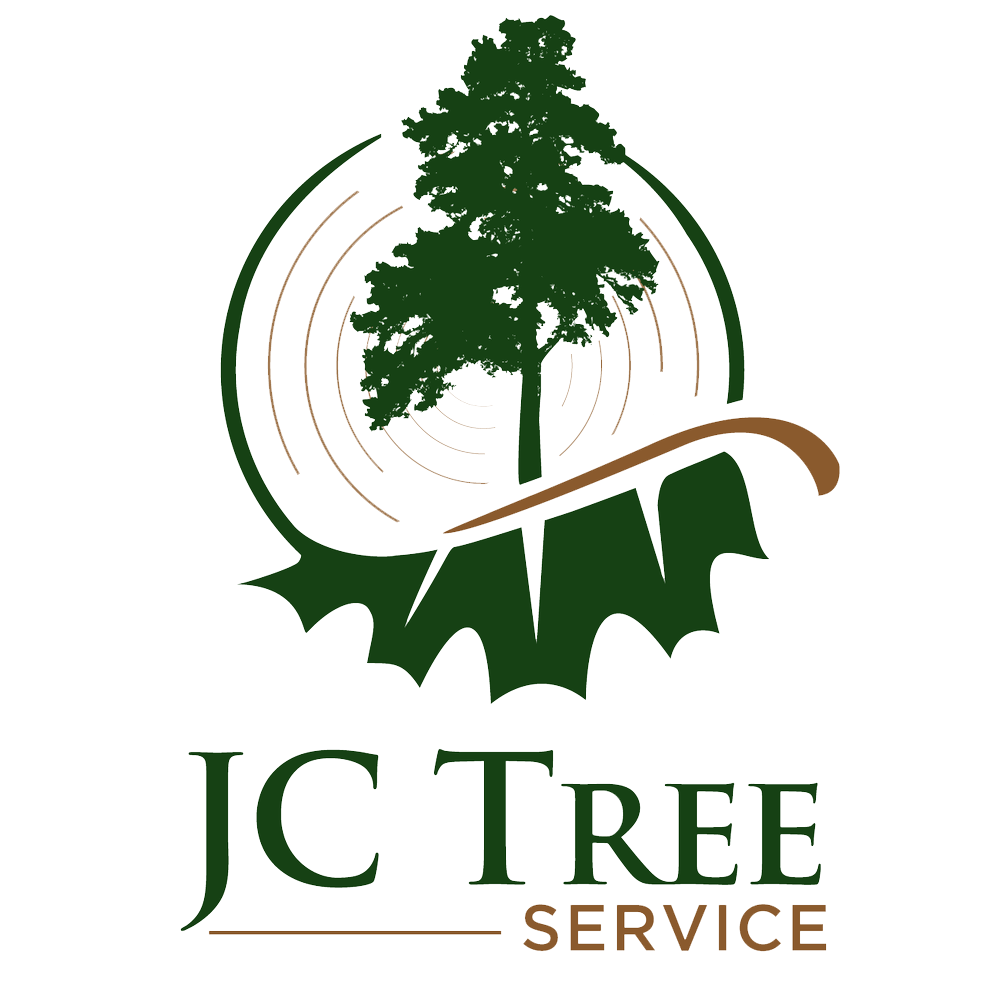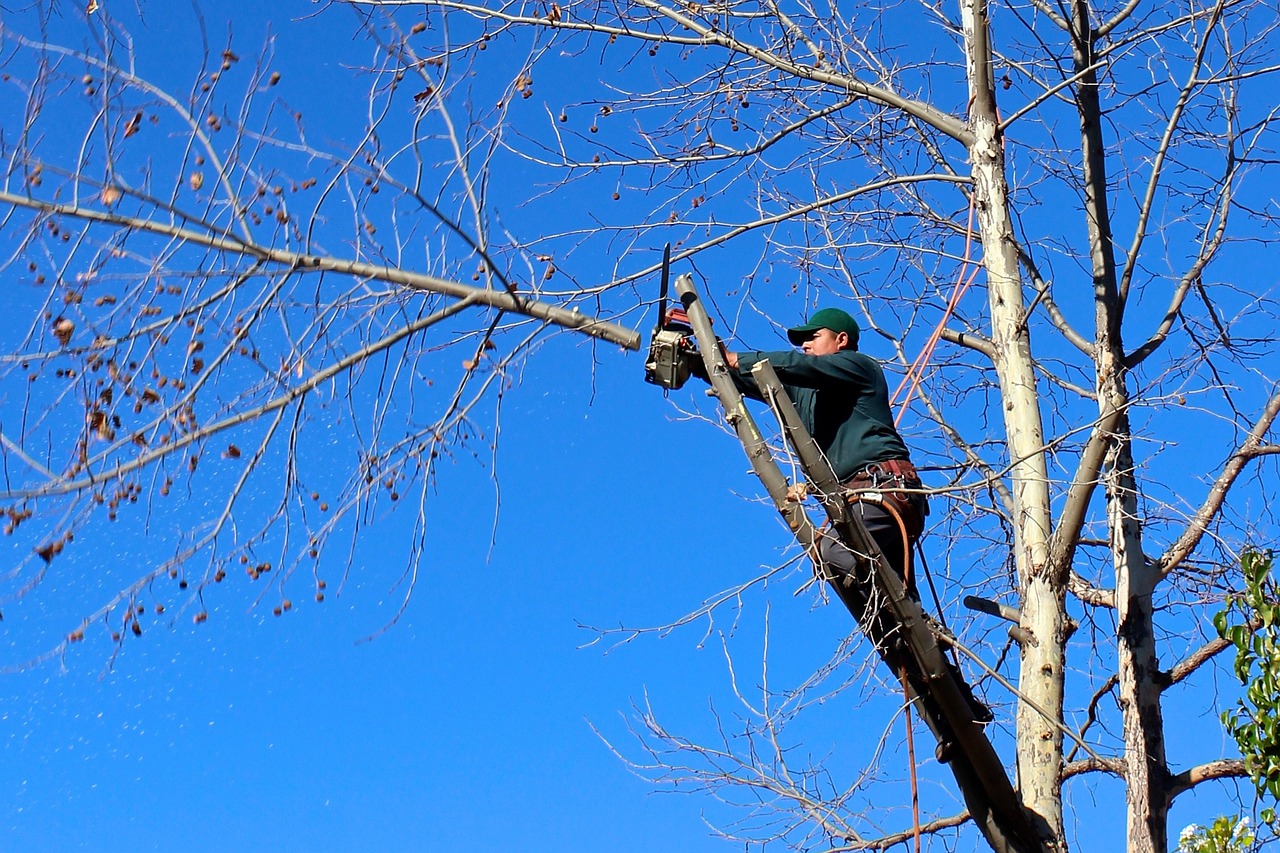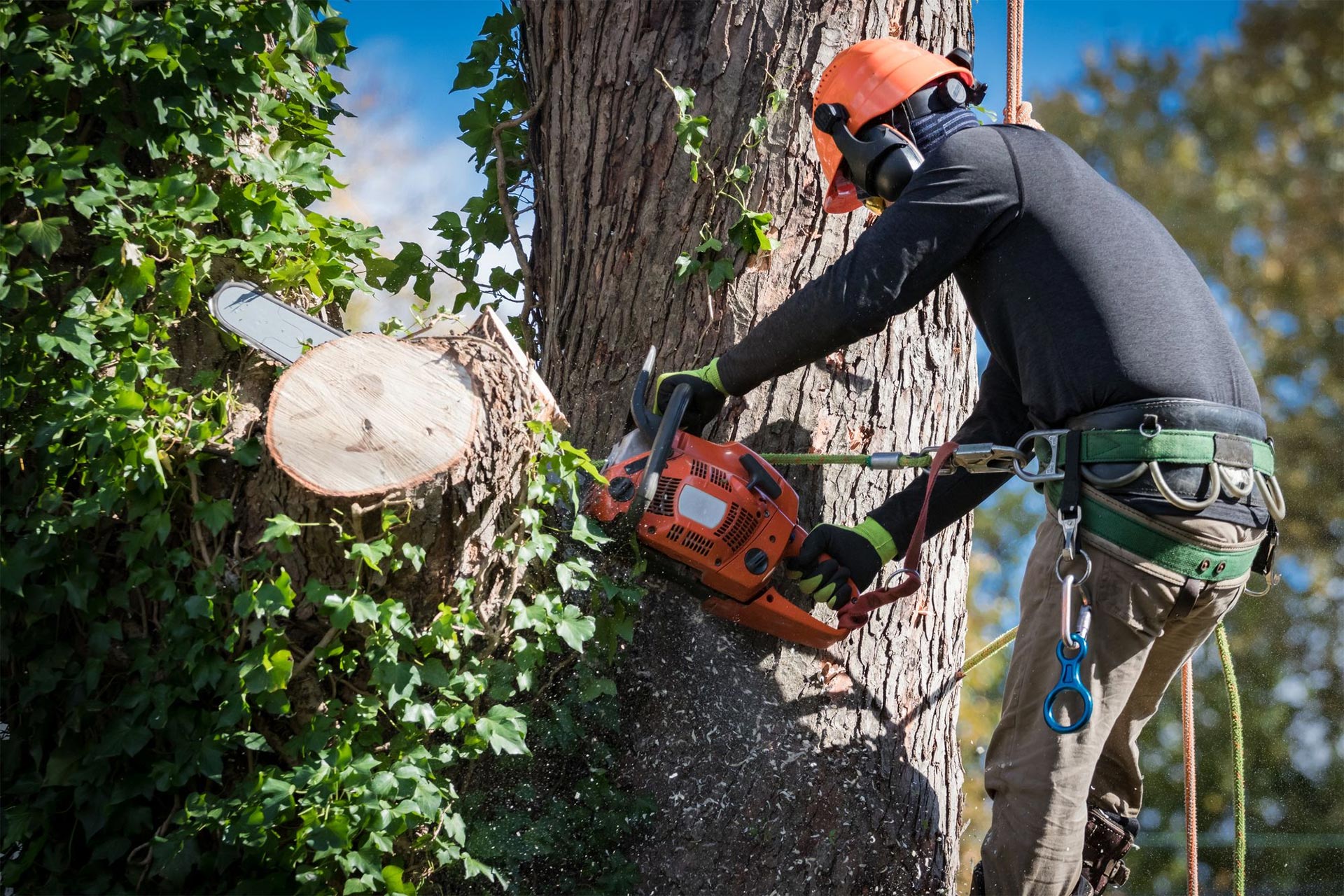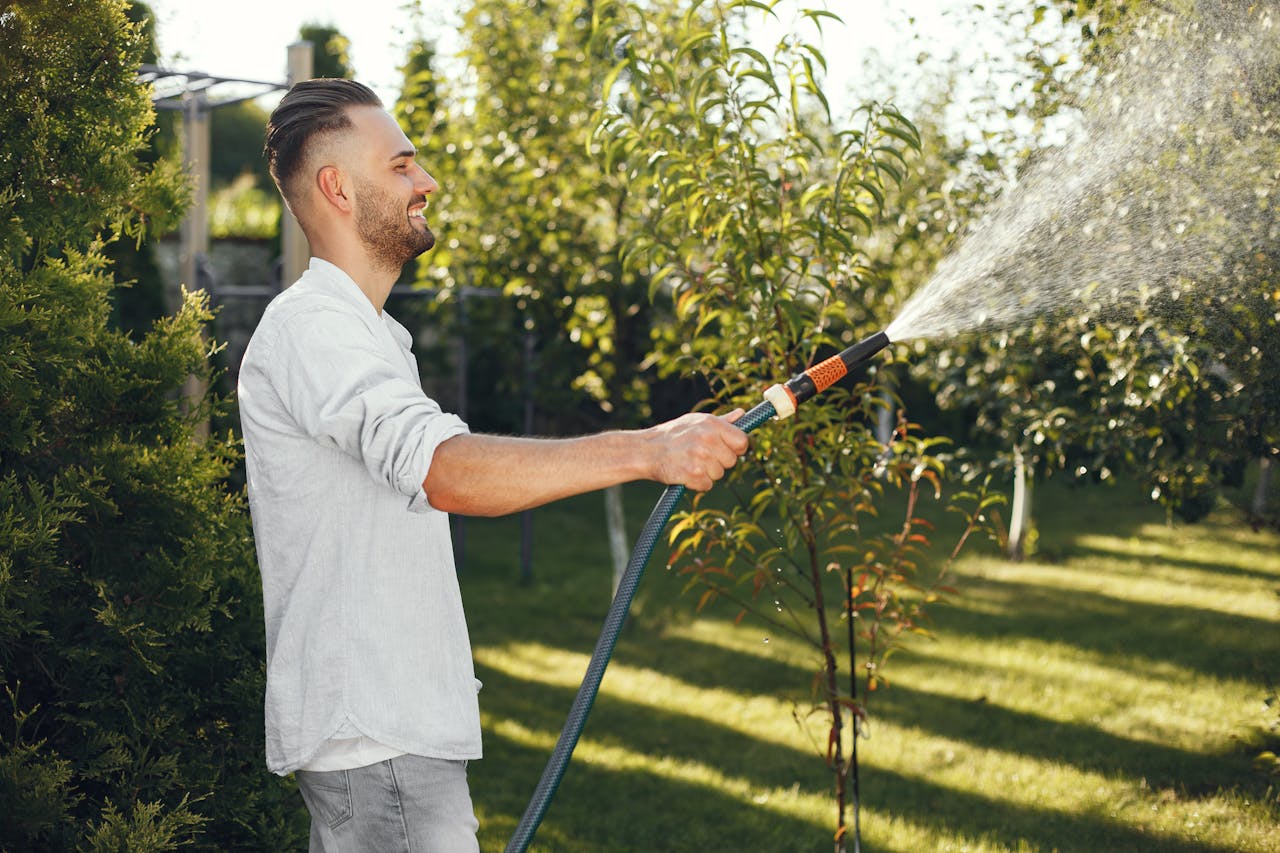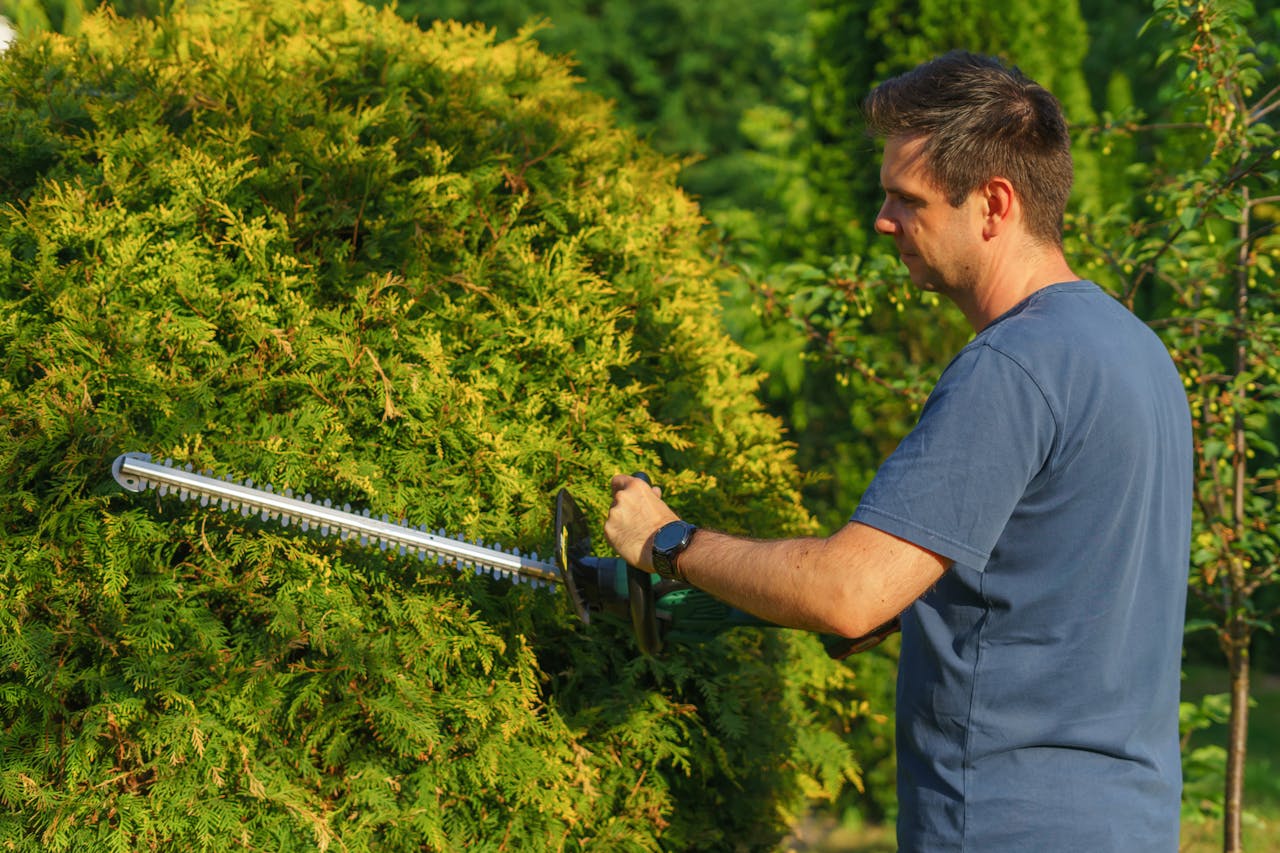Key Takeaways
- Consider climate, soil type, and mature size to make sure they fit in and thrive over the long haul.
- Pick a planting site that has the correct sun exposure, drainage, and enough space for both your tree’s roots and future canopy. Stay clear of places under power lines or choked with other vegetation.
- Plants at the proper depth, according to species – should be rooted in dormant season. Make sure the root flare is above ground, and dig a wide, shallow, well-drained hole to encourage healthy root development.
- Don’t let trees get too dry or too wet with inconsistent watering. Provide deep watering for trees when necessary, monitor soil moisture conditions, and adapt your strategy according to rainfall patterns and seasonal variations.
- Mulch trees Read More Apply it properly—spread 2-4” evenly around the base, away from and not piled on the trunk. Change mulch yearly. To conserve moisture and prevent weeds, replace a thick layer of mulch each year.
- Even if they look healthy, trees should be regularly inspected for signs of stress, disea,se or pests. Early intervention can save trees from long-term and potentially irreversible damage and restore overall health.
Accidentally killing your trees usually starts with good intentions gone awry. Watering too much, pruning at the wrong time, and using the incorrect soil mix can all drastically reduce their health, thus making them more susceptible to disease.
Even watering every day is too much and will drown the roots. Further, piling excessive mulch up against the trunk invites rot and pests. Planting a tree in the wrong place is one of the biggest mistakes people make that impacts their growth.
Be wary of locations with bad drainage or little sunlight for your tree’s longevity. Each of these seemingly innocent mistakes can cause long-term effects, sometimes doing damage that goes unnoticed until it’s too late.
By identifying these problems sooner rather than later, you can take corrective action before your trees become unhealthy or even die. Here’s how to prevent these costly mistakes and save your trees from early demise.
Are You Accidentally Killing Your Trees?
Trees are essential to the environment, and with the right knowledge, you can avoid accidentally killing them. These mistakes can be easily avoided by first understanding some of the fundamental principles of tree care. When you make the right methods a priority, you’ll be making an investment in the long-term health, safety, and resilience of your trees.
Select Trees Suited To Environment
First, when selecting species, choose natives wherever possible because they have adapted best to local soils, climates, and pests. We know that non-natives don’t do well in conditions they don’t know, thereby supporting far fewer pollinators such as our caterpillar friends.
To start, take a look at the soil texture and drainage conditions prior to planting. Some trees, such as oaks, do best in deep, well-drained soils and others may require clay or sandy soils. Look at potential mature height and canopy spread so trees do not overcrowd each other or interfere with nearby buildings and wires.
Choose Optimal Planting Location
Adequate sunlight and drainage are key elements for healthy tree growth. Place trees where they can get the light they need. Shade tree and sun tree species are not the same.
To avoid having to deal with possibly destructive roots or branches in the future, never plant trees close to power lines or property lines.
Inspect And Correct Root Issues
Check the roots for circling patterns or abrasions, which can slow or kill a tree by preventing healthy root growth. The root flare needs to be above the soil line to avoid rot.
Only healthy roots can uptake nutrients and provide stability.
Apply Mulch Correctly
Mulching can be a great asset. Moisture conservation and weed suppression are huge benefits. Mulch needs to be applied appropriately.
Maintain mulch 2-4 inches deep. Just be sure to keep it at least 3 inches away from the trunk to avoid pests and decay.
Water Trees Consistently
Deep watering encourages robust root systems.
Adjust for seasonal changes, keeping the soil consistently moist, not saturated.
Common Planting And Care Mistakes
Despite our best intentions, minor mistakes in planting and care can unnecessarily stress a tree or, worse, kill it. Many of these mistakes are not realized until the damage is permanent. Here are some mistakes we often see and how to do it all right.
Planting In Poor Soil Conditions
Soil quality is one of the first things to evaluate. Trees struggle in compacted or contaminated soils, as these limit root growth and nutrient absorption. Testing the soil can reveal deficiencies, and adding organic matter, like compost, can improve structure and fertility.
Choose species suitable for your soil type—for instance, oak trees tolerate clay better than others.
Ignoring Dormancy Periods
Planting when a tree is in active growth, like in the spring or summer, can create additional stress on a tree. Dormancy takes place in late fall or in the winter. This phase allows roots to take hold without having to compete with the plant’s energy for leaf or fruit production.
Damaging trees outside this limited period threatens the species’ natural cycles and makes trees more vulnerable.
Overlooking Power Line Conflicts
Planting tall species underneath power lines sets everyone up for failure in the future. Low-growing options, such as flowering dogwoods, work much better in these spots. Always plan for the tree’s mature height and width, checking with local guidelines to prevent future conflicts with utilities.
Overcrowding Trees And Plants
When trees are planted too closely together, they’re automatically placed in competition for water, sunlight, and nutrients. Space them according to their adult size. For instance, maples often require at least 25 feet of overhead clearance.
Routine observations here will make sure they aren’t growing into one another.
Misunderstanding Tree Root Growth
Tree roots grow in all directions, typically much farther horizontally than the trunk extends. Planting too close to structures can cause structural damage, including damage to building foundations.
Allowing adequate underground room creates conditions for vigorous root systems, which are key to the health and well-being of every tree.
Believing Trees Are Always Self-Sufficient
Just as important, trees need care long after they have been planted. Proper watering schedules, pest check-ups, and disease checks should be made a regular practice.
Overwatering or ignoring mulching instructions 4 to 6 inches away from the trunk base can lead to long-term damage.
Watering And Fertilizing Errors
Watering and fertilizing trees incorrectly may unknowingly introduce harmful practices that negatively affect tree health and growth. By recognizing these errors and actively correcting them, you’ll go a long way toward nurturing strong, resilient trees.
Inconsistent Watering Schedules
Whether with a hose, a drip line, or even a bucket, a regular watering schedule is essential—most importantly for younger trees developing roots in their first couple years. Inconsistent watering, such as letting the soil dry out completely or consistently overwatering, can create an unhealthy root environment.
Weather changes, like more rain or summer drought, necessitate changing watering habits. Either use a soil moisture meter or stick your finger or a pencil into the soil 2–3 inches deep to see if it’s time to water.
For instance, with watering, to avoid overwatering versus underwatering, soil should be like a wrung-out sponge, neither dry nor saturated
Overwatering Problems
Watering too much starts to suffocate your roots and lead to bigger issues such as root rot. Indeed, root rot accounts for more than 60% of mortality in young trees. Symptoms are yellowing leaves and a rotting smell at the base.
Avoid this by making sure your pots have good drainage. Water deeply enough that the soil is saturated, but do it less frequently. That creates an environment for plants that promotes deeper, stronger roots instead of shallow surface roots.
Risks Of Early Fertilization
Applying fertilizer too early in the season, before trees have completely come out of dormancy, can be harsh on roots and inhibit growth. Always check soil nutrient levels before applying fertilizers and choose slow-release fertilizers to deliver ongoing nutrients.
If you’re fertilizing young trees, it’s best to wait until they exhibit signs of active growth before applying any fertilizers.
Hanging Feeders Near Trees
Bird feeders bring lots of unwanted furry and creepy critters that chew bark, girdle twigs, and/or infect trees with disease. Put out feeders at least five or six feet from trees and check regularly for indications of nibbling or fungal development.
Salting The Ground Near Trees
Salt applied for de-icing can migrate into soils, salting roots which leads to leaf tip scorch and dieback. Use sand or gravel instead for this within a tree’s root zone.
Pruning Problems And Solutions
Pruning, when done correctly, is necessary for the health and beauty of trees, but when done improperly, it can inflict permanent damage. Understanding common mistakes and proper techniques helps trees thrive while reducing risks like disease or structural weakness.
Pruning At The Wrong Time
When it comes to tree pruning, timing is everything. Improper pruning during the growing season weakens trees making them more susceptible to pests such as bark beetles—known vectors of the deadly emerald ash borer disease.
Curriculum & Topics Dormant season pruning, usually in late fall or winter, is best. Each species has very specific needs. For instance, fruit trees respond well to late winter pruning, while spring-flowering trees should be pruned soon after their flowers appear.
Pruning at the right times can make all the difference.
Improper Pruning Techniques
Pruning too much, such as taking off more than one-quarter of the canopy, stresses trees. Even worse, improper cuts can result in decay or improper healing.
Proper cuts made near the branch collar promote healing. In the case of mature trees, it’s best to hire a certified arborist for safety and to avoid stressing the tree with improper techniques.
Implement The 3-Cut Pruning Method.
Using a three-cut method helps to ensure that the bark isn’t torn. Start by making an undercut a few inches out from the branch collar.
Next, make a cut on top of the branch to ensure the branch is cut off completely. End with a clean cut at the collar to ensure a proper healing.
Select Proper Pruning Tools
High-quality tools, whether pruning shears, loppers, saws, or chainsaws, help to create clean cuts. Sharpening and sanitizing tools are imperative to reduce the spread of disease.
To get good results, make sure to use the right size tool for the size of the branch you’re cutting.
Avoid Flush Cuts
Flush cuts eliminate the beneficial branch collar, which increases healing time and attracts decay. Instead, prune to the collar’s natural angle to safeguard the tree.
No Stub Cuts Allowed
It creates open wounds that may never heal and allows slow roots to set in. Collar-level clean cuts prevent this.
Avoid Lion Tailing
Clearing excessive inner branches reduces canopy strength. To avoid damage, prune just enough to keep that balance.
No Heading Cuts Permitted
Topping or indiscriminate cuts impact the long-term health of the tree. Concentrate on expanding upward and inward for health and beauty.
Seasonal Pruning Mistakes
Pruning at the wrong time breaks up growth cycles. Make cuts in accordance with the tree’s needs and dormancy period.
Mulching Mistakes To Avoid
Mulching is a good practice to help trees thrive, but if done incorrectly it can be more harmful than helpful. By knowing the typical missteps and using mulch the right way, you’ll keep your trees safe from rot and disease.
Excessive Mulching HarmOver-mulching is a big one and can be damaging because roots can become suffocated from lack of oxygen and excess moisture. A mulch layer needs to be no more than 2-4 inches deep. If you apply mulch thicker than 3 inches, it will create conditions for root rot and waterlogging, which is abundant after a heavy rain storm.
Keep a close eye on your mulch for decay or infestation, as both of these problems can migrate to your tree. Continual corrections, as the tree matures and changes, are key. Younger trees, for example, require less mulching than established trees to avoid choking their growth.
Mulch Placed Against The Trunk
A common practice that creates a “mulch volcano.” This build-up of moisture at the base can result in bark rot and fungal issues. Make sure to keep at least a 6-inch buffer between the base of the mulch and the trunk.
This provides the necessary airflow, which helps prevent rot. Add mulch in an even layer surrounding the tree’s drip line, avoiding piling it against the trunk. This will ensure the soil remains moist without waterlogging it.
More Mulch Isn’t Always Better
Though mulch is extremely beneficial in conserving soil moisture, adding too thick a layer can have the opposite effect. Steer clear of inorganic materials or mulches that are infected with fungus or weeds, as they can kill the tree.
Organic mulch, like the wood chips or shredded bark in this image, is more beneficial. Use mulch in a smart way to help build healthy soil while avoiding issues such as moss development or soil splash.
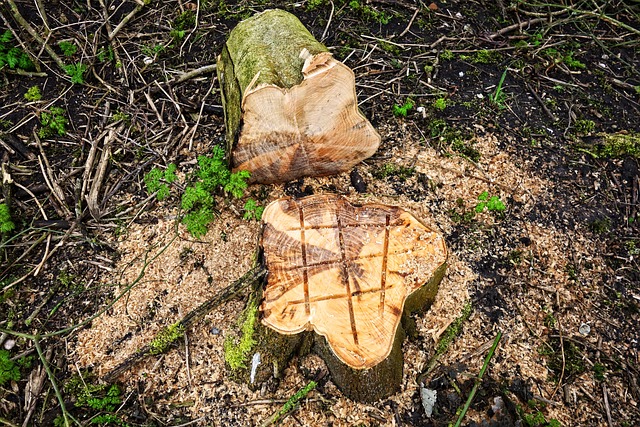
Staking And Support Issues
Proper staking and support are important to young trees, but well-intentioned practices can accidentally impede their growth and health. Staking missteps can result in long-lasting conditions such as decay and integrity failure. Learning how to stake trees properly and when to remove supports will keep your trees healthy.
Over-Staking Or Guying Problems
Overstaking, using excessive supports, or preventing the tree from moving freely can take away the tree’s ability to sway and effectively strengthen itself. This restriction inhibits trunk growth. It can lead to girdling too, where ties or wires cut into the bark, disrupting the flow of nutrients.
Instead, use light support, like two or three stakes, placed at equal distances around the tree. Flexible ties, such as tree straps or cloth ties, permit some degree of movement without increasing the chance of injury. Inspect regularly—particularly ahead of any storm seasons—to make sure ties are not pulling tight against the trunk.
When the tree has established a solid root system and can support itself, typically for one to two years, you need to take the supports out. This simple action serves to protect your tree from long-term harm.
Forgetting To Remove Stakes
Leaving stakes in for too long can restrict the tree, inhibiting its ability to grow freely. Stakes are meant to be a stop-gap, not a long-term solution. After one full growing season, evaluate the tree for stability.
If your tree can hold itself upright in the wind without leaning, then it’s time to take the stakes out. While routine observation allows the tree to take its organic form, it avoids bark girdling and root injury from abandoned ties or stakes left in the root zone.
Incorrect Staking Methods
When trees are staked improperly, like excessive stakes placed too close to the trunk or using rigid ties, it can lead to injuries. Place stakes beyond the root zone to stabilize the tree without compressing roots or creating a mound of soil on top of the roots.
Flexible ties prevent trunk scarring, and adjusting them as the tree grows ensures proper support. Routine maintenance goes a long way in adjusting the installation and encouraging well-established growth.
Overlooked Threats To Tree Health
Trees are under overwhelming pressures that may not be evident at first blush. Overcoming these insidious challenges is central to ensuring they remain healthy and flourishing. From environmental factors to human activities, learning about these underrated threats to tree health will better arm you to protect your tree’s health.
Dog Tied To Trees Dangers
Dog tethering damages the thick bark, the tree’s first line of defense against insect and disease threats. Even small damage can increase long-term health risks for the tree. Young trees are especially at risk, as thinner bark is more easily damaged.
Pay attention to signs of stress, including cracked or flaking bark and unusual growth. Sharing this knowledge with others can help protect trees in shared spaces like parks or yards.
Herbicide And Pesticide Misuse
Improper application of chemicals can damage tree roots and foliage. Applying herbicides too close to roots or spraying pesticides directly on leaves often results in chemical burns or dead patches.
Organic solutions such as neem oil or insecticidal soaps are environmentally friendly options for pest management that won’t harm your trees.
Leaving Stumps Consequences
Exposed tree stumps provide additional breeding grounds for pests like termites or fungi that can migrate and infect other local trees. Removing the stumps by grinding provides a safe solution to these dangers.
Continue to monitor the area for signs of regrowth or decay to prevent the issue from continuing.
Filling Cavities With Concrete
Concrete can create cavities on the tree’s trunk that trap moisture and make the tree even weaker. Instead, use natural fillers such as wood chips or consult an arborist to ensure the proper care your trees need.
Covering Roots With Impermeable Materials
If roots are immediately covered with non-breathable materials like concrete or plastic, they can suffocate, depriving them of air and moisture. Select mulch or breathable materials to encourage the healthy function of rooting systems.
Look out for stress indicators, like drooping foliage or stunted development.
Recognizing Early Signs Of Disease
Early detection of tree diseases is key to a long and healthy life. Trees usually exhibit very clear indications of stress long before a situation reaches a critical level, thus increasing the need for routine observation, mindfulness, and vigilance. By learning to recognize these early signs of disease, you can help save your trees from permanent destruction.
Healthy-Looking Trees Need Checks
Even trees that look healthy from the outside need deep and regular examinations. Changes in the color of the leaves, like yellowing, browning, or wilting while the plant is actively growing, are early indicators that something is amiss. Pine trees with browning needles could be victims of Annosus Root Rot.
This pernicious fungal disease can dramatically stunt new needle growth leading to a condition called “butt rot.” Likewise, cankers—sunken or discolored patches on the tree bark—can compromise a tree’s structural strength and its ability to defend itself against attack. Diseases such as Diplodia Tip Blight often present with symptoms such as dark spots and yellowing or brownish needles.
This reinforces the case for regular monitoring. A good first step is an annual inspection of trees along roadways and other public areas. Then, get to know the individual requirements for each tree species in your landscape.
It could be that some trees are simply more predisposed to certain diseases. For instance, Bacterial Leaf Scorch (BLS) today is widely caused by the Xylella fastidiosa bacterium. Learning about these dangers helps make sure you’re almost ready to respond when the time comes.
Importance Of Regular Inspections
Get into the routine of checking your trees throughout the year. Look for early indicators, like stress from insect injury or fungal disease. Watch for changes such as leaf yellowing or browning or abnormal growth.
Keeping a log of these observations can help track health trends and guide timely action. By addressing problems early, like pruning out canker-infected branches, you’ll help your trees stay healthy and be better able to face future challenges.
Debunking Tree Care Myths
Looking out for trees takes more than goodwill. It takes knowledge and careful decision-making. Well-meaning but misguided beliefs about how to care for trees can severely damage their health, making them more susceptible to disease and decay. By debunking these myths, we can all embrace better practices that promote longevity and sustainability.
Misbelief About Topping Trees
Topping, or cutting the tops of trees back to a predetermined height, is still a widely practiced “quick fix” for trees that have outgrown their space. The practice has the unfortunate effect of undoing the tree’s natural growth and weakening the tree’s structure.
When taken too far, removing large branches means leaving open wounds inviting decay and pests into the tree and threatening its health. Topped trees rarely survive long-term, most declining within a few years and requiring removal.
Instead of topping, better pruning techniques, like thinning or crown reduction, can achieve similar objectives. These approaches maintain the tree’s natural appearance, all while controlling the tree’s size. By consulting with certified arborists, you’ll be confident that cuts are made in a proper way to encourage healthy regrowth and avoid long-term damage.
Pruning Anytime Is A Mistake
As with most tree care practices, timing is essential with tree pruning. Cutting during the active growth times increases stress on the trees, making them more vulnerable to disease.
After all, late winter or early spring is the ideal time to prune for most species. This timing will give the wounds time to heal before any pests are active. Under each tree’s unique requirements, knowing where the tree is in its growth cycle is key.
Daily monitoring aids in determining the optimal times to prune, balancing necessary maintenance with concerns over the impact it may have on the tree’s health. Do not compact the soil around the root zone. They typically sit in the upper 18-24 inches of soil and reach well beyond the tree’s canopy.
By keeping this root zone healthy, we, in turn, help keep our trees healthy.
Conclusion
Tree care done correctly ensures that trees remain healthy and beautiful for generations. Big damage often comes from small mistakes such as overwatering or mis-pruning their trees. Paying attention to things like proper mulching, watering schedules, and spotting early signs of disease can make all the difference. It isn’t so much that every detail is done perfectly, but more that conscious decisions are made that the tree is going to grow and thrive.
With the benefits of shade, beauty, and property value your trees provide, it’s well worth taking the time to give them the care they deserve. If you have questions at any point, consult with a tree care expert or certified arborist to steer clear of mistakes. A bit of work today can head off major problems in the future. Give your trees the high-quality care they need and deserve, starting right now.
Frequently Asked Questions
1. How Can Overwatering Harm My Trees?
Overwatering can suffocate roots by depleting oxygen levels in the soil. That can cause root rot and other diseases. 4) Never water until you check soil moisture. Most trees require at least 1 inch of water per week, rainfall included.
2. What’s The Proper Way To Mulch Around A Tree?
Apply mulch 2–4 inches deep in a doughnut shape, at least 2–3 inches from the trunk. Piling mulch against the trunk (AKA volcano mulching) traps moisture against the bark, leading to rot and inviting pests.
3. When Is The Best Time To Prune A Tree?
The ideal time to prune most trees is late winter or early spring before new growth starts. This reduces trauma and allows for faster closure and healing of wounds. Never remove more than 25% of the tree’s foliage in a single season.
4. Why Is Staking A Tree For Too Long Harmful?
Excessive or long-term staking (more than a year) can weaken the trunk and root system, making it harder for trailing trees to grow firm. Take away stakes when the tree no longer needs them so it can move and grow naturally.
5. What Are Common Signs Of Tree Disease?
Check for discolored foliage, dying branches, bark fissures, or mushroom growth. With swift action, your tree may still be safe. Inspections on a regular basis will help identify problems before they can spread.
6. How Can I Tell If I’m Over-Fertilizing My Tree?
Over-fertilizing can result in rapid, spindly growth, yellowing of leaves, or leaf drop. Avoid fertilizing except in cases where the tree is clearly showing signs of nutrient deficiencies. Use a slow-release fertilizer and don’t over-fertilize according to the label.
7. Are DIY Tree Care Tips Always Reliable?
Not even close. This misinformation can end up killing your trees. Always defer to certified arborists or other trusted experts for strictly non-lethal care. Investing in proper care protects your investment and ensures healthy trees for generations to come.
Protect Your Landscape With JC Tree Service’s Expert Tree Disease Solutions
If tree disease is threatening the health and beauty of your property, JC Tree Service is here to help. Whether you’ve noticed discolored leaves, brittle branches, or unusual growths, our expert team can diagnose and treat a variety of tree diseases. From targeted treatments to full tree removal when necessary, we provide comprehensive tree care solutions in Brentwood, Antioch, and surrounding areas.
Tree disease can spread quickly, weakening your trees and posing risks to your landscape. Early intervention is key to preventing further damage. At JC Tree Service, we tailor our treatments to the specific needs of your trees, helping to restore their health and vitality. Our expert care not only preserves the natural beauty of your property but also prevents potential hazards like falling limbs and decay-related structural issues.
Don’t let tree disease compromise the safety and aesthetics of your outdoor space. Contact JC Tree Service today for professional diagnosis and treatment. We offer a free, no-obligation quote to help you get started. Let us protect and preserve the trees that make your landscape thrive!
Disclaimer
The materials available on this website are for informational and entertainment purposes only and not to provide legal or professional advice. You should contact your attorney or home improvement specialist to obtain advice concerning any particular issue or problem. You should not act or refrain from acting based on any content included in this site without seeking legal or other professional advice. The information presented on this website may not reflect the most current home improvement developments. No action should be taken in reliance on the information on this website. We disclaim all liability concerning actions taken or not taken based on any or all of the contents of this site to the fullest extent permitted by law.
